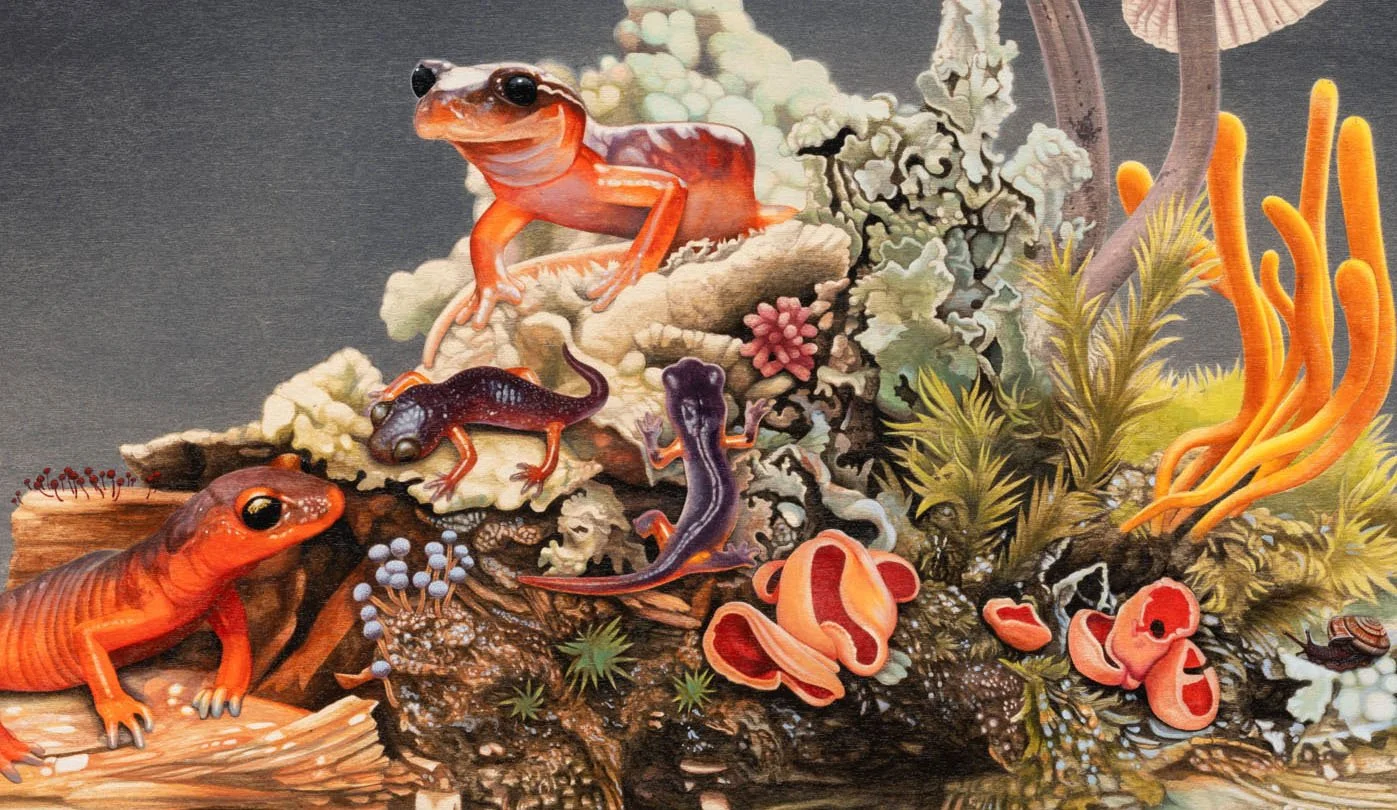
PAINTING PROCESS
Materials: Maple Wood
For more than two decades, Bozic has refined a meticulous painting method, applying diluted acrylic washes to maple to preserve the wood’s natural grain and subtle luminosity. This signature technique has inspired a new generation of artists.
Chosen for its strength, beauty, and longevity, maple is an abundant hardwood that can be responsibly harvested without compromising native habitats. Its density and fine surface not only support archival permanence but also embody an ecological sensibility—storing carbon, aging gracefully, and aligning material choice with the artist’s commitment to biodiversity and environmental stewardship.
Her work is created on the ancestral lands of the Coast Miwok, whose deep ties to Marin, California continue to inspire her.
Sustainable Practice
Working from a sustainably built home studio eliminates the need for a daily commute, significantly reducing environmental impact. Each painting is created with translucent washes—often less than a tablespoon of pigment per square foot—allowing the wood grain to remain visible while using fewer materials than a single plastic takeout container. By producing only a small number of highly labor-intensive works each year, the practice is rooted in longevity, with each piece intended to endure for generations. Ten percent of annual proceeds support permanent land conservation, ensuring the creative process remains in direct alignment with principles of ecological stewardship.
Craftsmanship
For over twenty-five years, Bozic has partnered with the master artisans of Custom Furniture Design, led by Thomas Fetherston, to create the custom maple panels and frames that form the foundation of her work. Each surface is prepared and finished with museum-level precision, ensuring archival stability, structural integrity, and visual harmony. This enduring collaboration reflects a shared commitment to excellence, fine craft, and the lasting preservation of art.
Resources
Bozic collaborated with Art and Climate Action to create an Artist Action Plan—a simple, downloadable checklist to help artists adopt more sustainable studio practices.
Download the Artist Action Plan (PDF)
Best practices for paint disposal – Golden Paints: https://www.goldenpaints.com/waste-disposal
BARDER.art – a resource-sharing platform for the art world: https://www.barder.art/about


